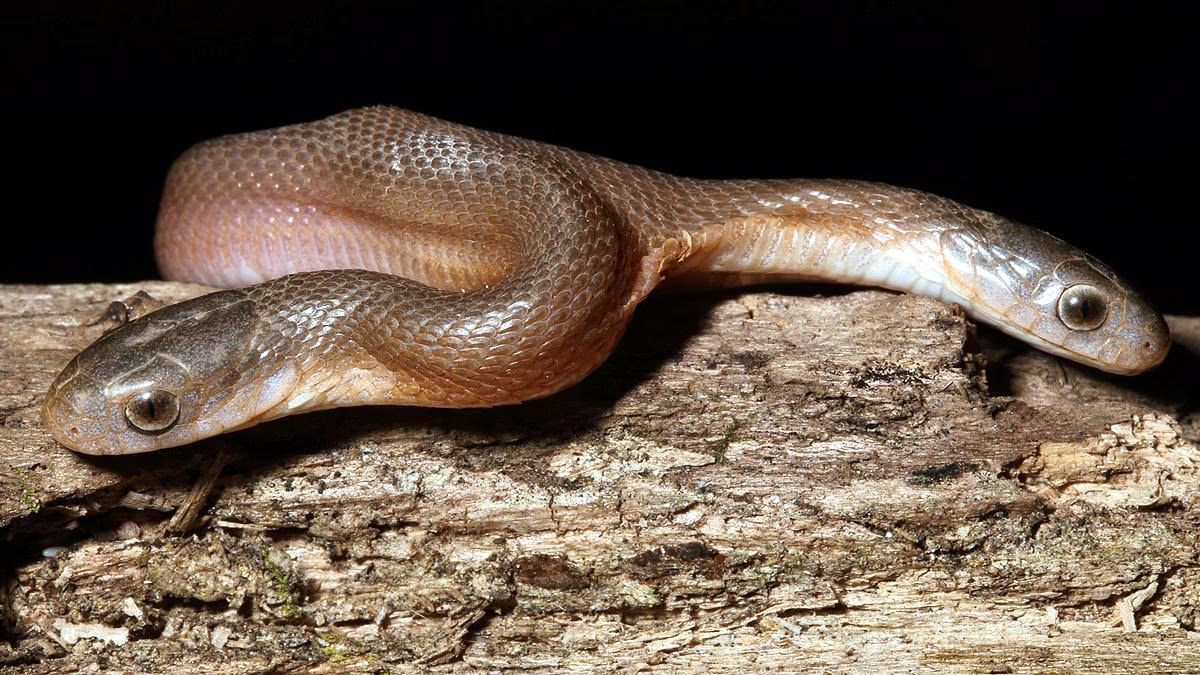A remarkably rare two-headed snake was caught in the Vedwe region of South Africa. The property owner where the snake was found kept it in a glass container before calling Nick Evans, a snake conservationist, to collect it. Nick Evans is the founder of KZN Amphibian and Reptile Conservation.

Source: aajtak
Sharing pictures of the snake on his Facebook post, he wrote that recently, near the Bri area of northern Durban, he received a photo from Vedwe (Ndwedwe) of a two-headed snake. It's a Southern Brown Egg-eater, harmless to humans.

Source: aajtak
This two-headed Southern Brown Egg-eater is nocturnal and non-venomous. Typically, these snakes can grow up to 30 inches long, but this one measures only about 12 inches, suggesting it's still a juvenile. Nick Evans elaborated that one of the biggest challenges with a two-headed snake is deciding which direction to take, as one head might want to venture one way while the other goes in the opposite direction.

Source: aajtak
Nick observed that when resting, the snake sometimes allows one head to lie over the other. The name Southern Brown Egg-eater suggests it feeds on eggs. Despite lacking teeth, it can crack open several eggs at once and swallow the contents, sometimes even gulping down the entire egg. Its throat has the capability to shatter eggshells once inside, and it later regurgitates the shell.

Source: aajtak
Two-headed snakes are seldom seen, a condition known as bicephaly, which occurs when twins fail to separate before birth. Statistically, only one out of 10,000 snake births result in such a phenomenon, and their survival rate is extremely low; very few live long.
The snake is now under professional care after being handed over by Nick Evans. It's being observed for a short period before being released back into its natural habitat in the forest, as scientists are keen to see how it thrives in the wild, which is essential for its longevity.
Source: aajtak
ISRO's PSLV-C53 Mission: A satellite that can capture images any time of day, in any weather, has launched
Yamuna River: Water levels hit a 57-year low, could it become the 'Saraswati'?




